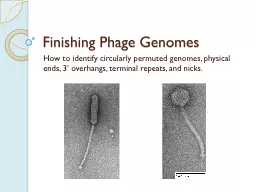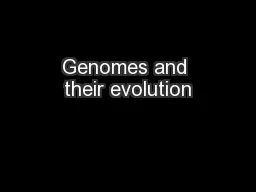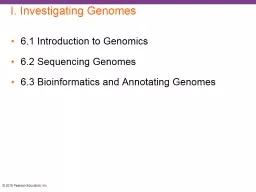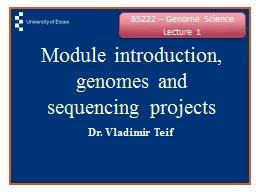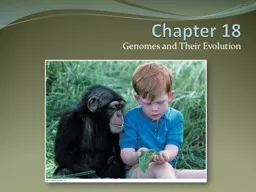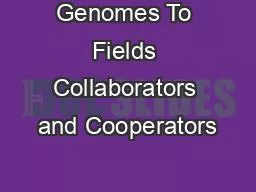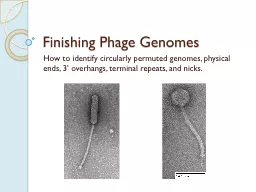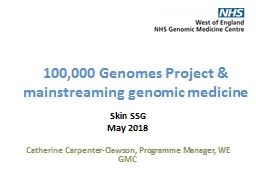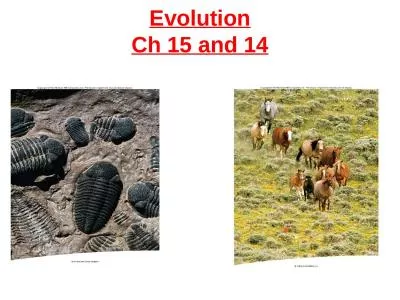PPT-0 21 Genomes and Their Evolution
Author : deena | Published Date : 2022-02-14
Clicker Questions by Tara Stoulig Which of these criteria have been used in selecting species whose genomes have been sequenced The species should be relevant
Presentation Embed Code
Download Presentation
Download Presentation The PPT/PDF document "0 21 Genomes and Their Evolution" is the property of its rightful owner. Permission is granted to download and print the materials on this website for personal, non-commercial use only, and to display it on your personal computer provided you do not modify the materials and that you retain all copyright notices contained in the materials. By downloading content from our website, you accept the terms of this agreement.
0 21 Genomes and Their Evolution: Transcript
Download Rules Of Document
"0 21 Genomes and Their Evolution"The content belongs to its owner. You may download and print it for personal use, without modification, and keep all copyright notices. By downloading, you agree to these terms.
Related Documents




